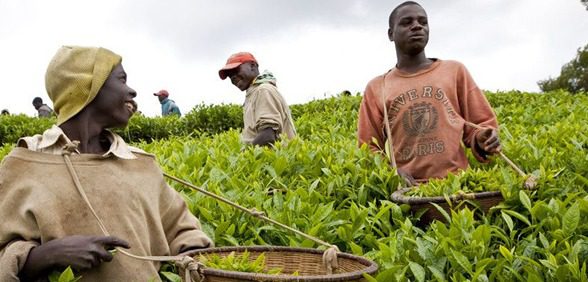Agriculture
Engagements In Family Farming Through ICTs. -By Dr. Santosh Kumar Mishra

o What should be the role(s) of the different stakeholders involved?
Family farming includes all family-based agricultural activities, and it is linked to several areas of rural development, namely crop and livestock production, forestry, fisheries, and aquaculture1. Since the beginning of agriculture, family farming has been contributing significantly to food and nutrition security globally. Stakeholders need to focus on following points:
(a) Include the youth in policy decisions: The youth are the leaders of tomorrow and should be included in decision-making and policy making. It is therefore recommended that young men and women are included in committees when policy decisions are being made and that their opinions are taken into consideration throughout the process. The equal engagement of young women and men in decision-making processes at local, national and regional levels should be facilitated.
(b) Invest in education: School curricula should be linked to on-going policy debates and developments in the agriculture field. More opportunities for on-farm training for the youth, and enterprise development training, particularly in “value-added activities” such as food processing, packaging and trade, should be identified and utilized. More training for young men and women is required to build skills in agronomy and business. Consideration should be given to making university degrees in agriculture more appealing to young people and to providing incentives to attract more students.
(c) Provide economic incentives for the youth to participate in agriculture: Incentives targeting the youth should be provided and the direct beneficiaries should be made aware of the existence of the incentives. For example, if loan facilities are provided to start an agribusiness, students and young graduates from the university or other training centres should be informed about these schemes or incentives.
(d) Improve policies that encourage access to land, credit, finance and investment by the youth for agricultural projects: Allocate land to agricultural projects for young people in rural and urban areas. There is a need to improve the land formalization processes in rural and urban areas to enable the youth to own bankable land. There is also a need to invest in “collateral-free micro-credit systems” that offer incentives tailored to the financial needs of young farmers. Financial institutions should develop agricultural financing packages and loan products that target the youth, who until now have often been seen as high risk clients because they have very little security or assets that can be used as collateral against which they can mobilize credit or loans from banks. Greater investment in agriculture is needed. Investment should target youth programs and ensure that more programs that meet the needs of different categories of young people are designed and implemented. This may entice more of them to get involved in agriculture and contribute to the economy of the country and food security, thus reducing the unemployment rate. All schemes that are provided to the farming community should be published on government portals. This will create a greater awareness among interested young men and women of the type of programs at their disposal and how they can use them.
(e) Encourage the use of modern technologies in agriculture: Traditional farming is seen as unattractive to most young men and women. However, the use of ICTs along the agricultural value chain (production by hydroponics, access to market information through mobile phones, marketing of products using social media, etc.) has changed the way agriculture is being practiced. The youth are already interested in ICTs and a more extensive application of ICTs in agriculture might attract more interest from them.
(f) Rebrand the agricultural sector: Farming should be presented more effectively as a business opportunity. The agricultural sector should be seen in its totality and the youth should be made aware of the opportunities that exist throughout the “agricultural value chain”. They could get involved in it anywhere from inputs manufacturing and supply, agro-processing, or marketing and financing of agricultural products, all the way to the production process itself. Databases of organizations that can provide young people with information, skills and opportunities in agriculture should be developed and disseminated widely. Targeted marketing opportunities for primary and value-added agricultural products produced by young entrepreneurs should be identified and encouraged.
(g) Promote leadership in agriculture: The young people who are involved in agriculture sometimes feel that they do not have any support or guidance and they are demotivated. Introducing mentorship programs to guide young farmers may help them find ways to make a good living from agriculture. In addition, what are required are: (1) “encouraging greater investment of time and resources in young professionals across agricultural value chains and toward climate-smart agriculture”; and (2) “ensuring that young professionals are prepared, directed and supported to undertake relevant research with the scientific rigor that is needed for decision-makers at all levels”.
o What recommendations do we have?
I propose following recommendations:
(a) Focus on young smallholder families who already made a conscious choice for farming and are likely to apply ICTs to their farming activities.
(b) Differentiate and tailor ICT training approaches and user support on the basis age, marital status, gender, and ownership of or access to land.
(c) Pay attention to removing obstacles that prohibit young women from fully participating in, and taking advantage of, ICT-related activities.
(d) Furnish ICT centres as learning spaces to support informal exchanges and networking by young farmers (male and female).
(e) Encourage the emergence of diverse early adopters and role models to inspire diverse profiles and groups of youths to follow suit.
(f) Consider strategies to diffuse integration of ICT from specific value chain crops to diverse crops and activities.
(g) Include ongoing monitoring, evaluation and learning activities as part of the programs to identify unintended negative effects and undertake corrective action when necessary.
In addition to what are stated above, policy-makers need to focus on following strategies for the purpose of ensuring further engagement and involvement of the youth in the agricultural value chains.




















